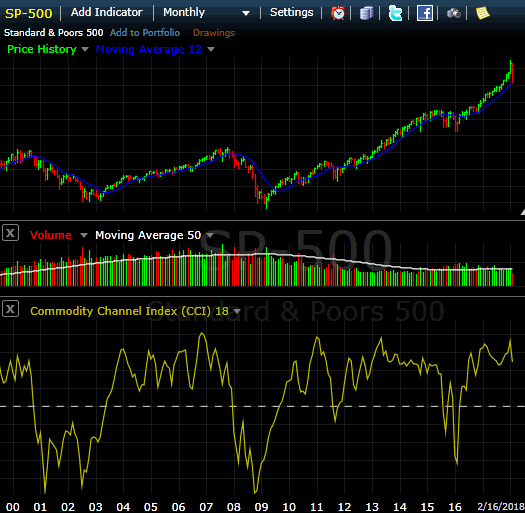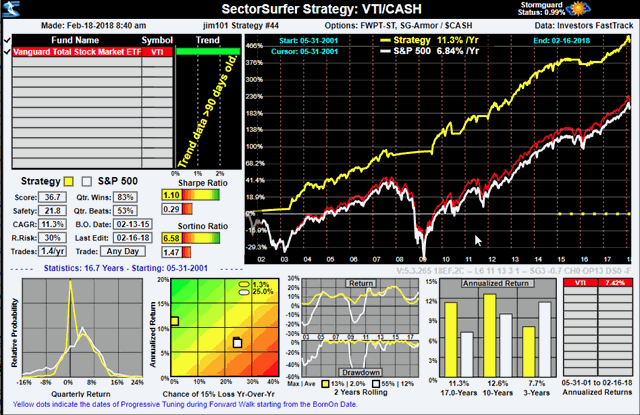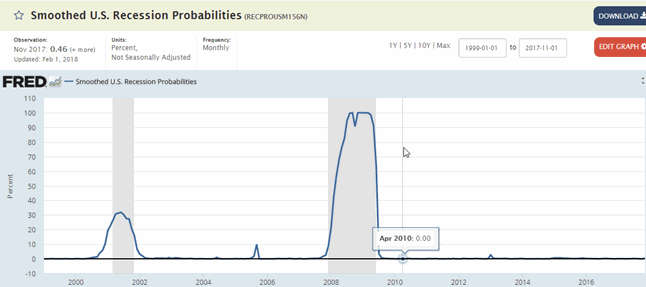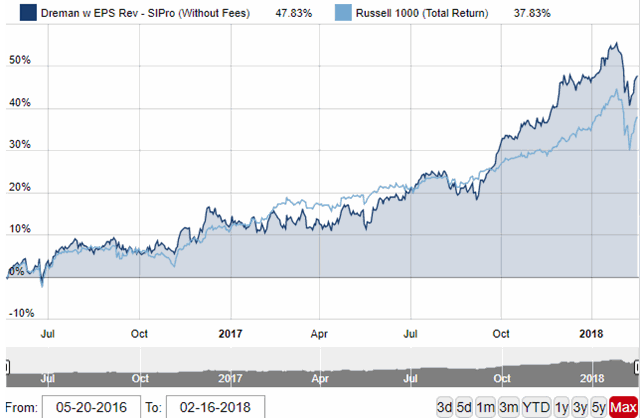- Index Investing -
Matching Market Returns
Index investing is a proven way for both beginning and experienced investors to participate in the long term performance of the stock market. The approach is well documented and amenable to both quantitative and qualitative investing styles.
Index investing is also the simplest way for an investor to match the total return of the stock market. Not more, not less.
It is also a great way for the novice to ease into investing.
What is a Market Index
A market index is a mechanism to track the aggregate value of a portfolio of stocks or financial instruments. It can represent a global, regional, national or exchange based portfolio or a subset of a market (e.g., sectors).
The change in index value represents the performance of the index.
You cannot buy an index, but you can buy a Mutual Fund or ETF tracking the index.
Index Examples
There are indexes representing most asset classes.
Stocks - the following are common indexes. Please note that "diverse mix" means diversity within the asset class (stocks). It does NOT imply diverse asset classes or asset allocation. Wikipedia has a comprehensive list of stock indices.
- Wilshire 5000 - tracks all the stocks traded on the NYSE, AMEX and NASDAQ exchanges. OTC stocks, MLPs and ADRs are not included.
- Dow Jones Industrial Average (DJIA) - comprised of 30 mega cap US companies. With only 30 components, there is not significant diversity with respect to sectors, but these are dominant companies. No MLPs are included.
- S&P 500 - a diverse mix of 500 large cap stocks traded on US exchanges. OTC stocks, MLPs and ADRs are not included.
- Russell 1000 - a diverse mix of up to 1000 large and mid cap stocks traded on US exchanges. ADRs and OTC stocks are not included.
- Russell 2000 - a diverse mix of 2000 small cap stocks traded on US exchanges. OTC stocks are inclued, but MLPs and ADRs are not.
- S&P/TSX Composite - a diverse mix of 250 stocks traded on the Toronto exchange.
- FTSE 100 - 100 stocks traded on the London exchange.
- NIKKEI - 225 stocks on the Toyko exchange.
- MSCI World - a diverse mix of over 1600 stocks from 23 developed countries. Excludes stocks from emerging economies.
Bonds - like stocks, there are indices which track bonds. Keep in mind there are both corporate bonds as well as government bonds.
- Bloomberg Barclays US Capital Aggregate Bond Index - a market cap weighted index of government bonds, mortgage backed securities and corporate bonds. Municipal bonds and TIPs are excluded.
- Citi World Government Bond Index - government bonds of multiple countries.
- S&P 500 Bond Index - the counterpart to the S&P 500 stock index, it tracks the corporate debt issued by constituents of the S&P 500.
Commodities - these indices are generally based on commodity futures and can be specific to a commodity (e.g., agriculture), or broad based.
- S&P GSCI - a composite index of commodity sector returns representing an unleveraged, long-only investment in commodity futures that is broadly diversified across the spectrum of commodities.
- Dow Jones Commodity Index - a broad measure of the commodity futures market that emphasizes diversification and liquidity. Equal-weighted.
There are indexes for other asset classes, but they are generally stock based portfolios for a market sector associated with an asset class. For example, Real Estate has an index (MSCI Real Estate Index) that tracks Real Estate Investment Trusts (REITs) traded on the exchanges. It does not track real estate investing per se.
For appropriate ETFs to track an index, check ETF Database. Note that you can check the US tax status of each ETF to determine if you will receive a K1.
Index Investing Rationale
"Over time, the aggregate gains made by shareholders must of necessity match the business gains of the company." Warren Buffet
In The Little Book of Common Sense Investing, John Bogle advocates buying all available stocks in the market as a way to capture the cumulative earnings growth and dividends of the companies in the market. In other words, be a shareholder in all the companies and share in their performance.
And as founder of Vanguard Investing, Bogle provided what he believed - ETFs and Mutual Funds offering retail investors index investing.
First, he makes the case that the stock market as a whole actually represents the dividends and earnings growth of companies in diversified industries. For the period from 1900 to 2005, the average annual return of those companies was 9.5%. The stock market return for the same period was 9.6%.
Okay. So maybe you aren't planning to be in the market for more than 100 years.
Next, Bogle spends a great deal of time supporting the notion of passive investing. Passive meaning you trade very little; active meaning you actively pick stocks or baskets of stocks intending to outperform the market.
His view - you are more likely to get market returns with index investing than you are to outperform the market by any other means.
As far as I can tell, there is no "past returns are no guarantee of future performance" disclaimer in the book. On the other hand, if you believe businesses will continue to grow earnings and pay dividends in the future, a disclaimer isn't necessary. NOTE: Japan's NIKKEI index has never recovered to it's all time high in 1989.
Holding period and rebalancing
For index investing there is one index - the entire market. In the US, this means the Wilshire 5000. There is no ETF directly associated with the Wilshire 5000, but VTI does track the entire US market.
The holding period - forever. Or until there is a need and you begin cashing in (e.g., retirement).
In a cap weighted index there is nothing to rebalance. It remains cap weighted unless the number of shares changes. Action is required by the managers of the ETF or fund only when companies are added or dropped from the index.
Costs, costs, costs
The lower the cost to manage the index ETF or fund, the better the performance.
In addition to providing the broadest possible diversification within the market, Bogle cited the lowest possible cost as a reason for the success of index investing.
Passive investing costs less than active investing. There are no qualitative decisions for management of an index.
Cap weighting actually reduces transaction costs since rebalancing is not necessary to maintain the weighting. An equal weighted index requires constant rebalancing (and therefore, costs).
Costs, like gains and losses, compound and affect performance.
Recent performance
The following Portfolio123 chart illustrates the performance of VTI, the Vanguard ETF, from its inception May 1, 2001 through December 31, 2017 using IWV, a Russell 3000 ETF as a benchmark. Dividends are included in both VTI and IWV performance.
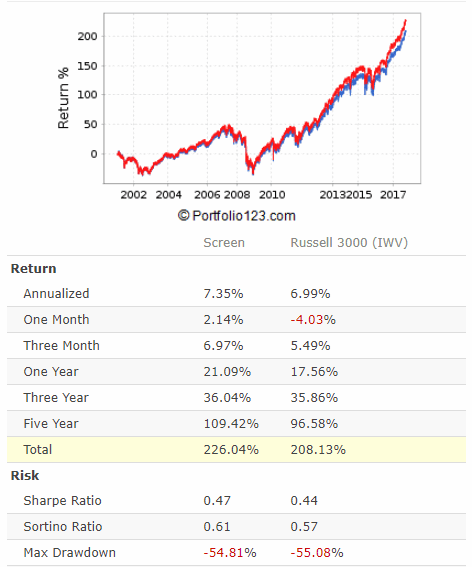
VTI tracks all the market, not just the 3000 stocks in the Russell benchmark.
Bogle's conclusion
Buy the market.
The Good, the Bad, and the Ugly
The good news is that passive participation as an index investor requires very little effort, only a broker - no portfolio manager or stock screening tools.
And, you will get market matching performance.
The bad news? Depending on your personal circumstances, the only available option may be a fund with a high expense ratio. This happens in some 401(k) plans. Not good, since the extra expenses come out of your pocket.
Ugly?
The loss of equity has been over 80% on one occasion during those 106 years (although not mentioned in the Bogle book).
As you can see in the chart above, there was a drawdown of 54% in 2008. Not shown is a drawdown of 45% in the earlier bear market.
Ugly.
Market Climate Matters
Even an equity loss of 45% is significant.
Many index investing discussions either fail to mention the drawdowns or else provide assurance that the market will recover (OOPS, the NIKKEI never has fully recovered).
If it walks like a duck, quacks like a duck, and looks like a duck, it is probably a duck.
If the market climate is not favorable (like in a recession or a bear market), why are you in the market?
Maybe because you are repeatedly told you cannot identify bad times. Or even that it is impossible to identify bad times.
Consider the S&P 500 monthly chart below (FreeStockCharts)
Notice that when the 18 month CCI is below zero AND the index is below its 12 month SMA, things are not going well for the S&P 500.
Maybe it would be better to step aside during these conditions.
To illustrate the effect of stepping aside when things are not going well, consider the Sector Surfer approach. Their proprietary algorithm identifies which (of up to 12 ETFs or stocks) is the current best bet.
Suppose you only choose 1 ETF?
The following chart illustrates a backtest of choosing only VTI when the market is favorable (by Sector Surfer standards) or going to cash. There are more trades implied than in the CCI/SMA method illustrated above. But, don't rely on just technical analysis (it only looks like a duck).
Note that the backtest begins on 5/31/01.
Note also the under-performance in a strong uptrend - a common flaw in market timing.
If you decide to examine Sector Surfer (you can try for free), the VTI/Cash Strategy ID is 636545291435727857-6383-44-238789 and can be pasted into a strategy in the sandbox.
Is this a dilemma?
Market Timing, even at the Market Climate level, is often considered heresy among proponents of index investing. The view is that attempts at timing degrade performance.
For sure, there is no guarantee that a timing system will work correctly in the future even if it has been shown effective in the past. And with market timing, unless whipsaws can be avoided, there will be under-performance in strong uptrends.
On the other hand, there is no guarantee that the index will perform the same in the future even if it has a known performance in the past.
Financial advisors may be limited in their response to Market Climate due to the magnitude of the investments they manage. Most retail investors do not have that limitation.
Eliminating whipsaws
Incorporating timing in your investing is your call. But if you incorporate timing, you should consider a holistic approach to evaluating market climate. An approach intended to eliminate whipsaws.
Identifying Market Climate
Looking at the CCI indicator in the chart, it is clear that it went below zero at major drawdowns in the index. But it also went below zero on market corrections in 2011 and again in 2015 and 2016. These later events would create whipsaws in your investing - exactly the fault critics of market timing cite.
But instead of relying solely on technical analysis of the market, economic indicators and fundamentals can confirm or refute the technical indication.
One approach is the use of earnings estimates for an index. On a weekly basis, Portfolio123 calculates the cap weighted earnings of the S&P 500. This is an effective addition to composite timing. The use of cap weighted earnings is discussed here.
Another approach is the effect of PE on the market. Crestmont Research has a lot of material on the topic.
There is a mountain of economic data at the St. Louis Federal Reserve (FRED). Data is available in a variety of graphical representations and is associated on the resulting charts with the onset of recessions as shown on the following chart (link):
This chart (which you can edit to get alternate views of the data) or one of the dozens of other data points offer some hope of confirmation of your technical signal.
Confirmation is critical to identifying the market climate and eliminating whipsaws.
Action appropriate to Market Climate
Using a combination of technical analysis indicators and economic indicators from the St Louis Fed, the following dates were identified as unfavorable with respect to market climate:
- December 1, 2000 through April 30, 2003
- February 1, 2008 through June 30, 2009
Notice that the 2011, 2015 and 2016 technical indicators were not confirmed by the economic indicators.
One option is simply to go to cash during unfavorable conditions.
A second option is to use an ETF or mutual fund to invest in bonds. In other words, index investing in a different asset class. A class that may not suffer from the unfavorable climate.
The results would have been as follows:

This compares favorably with the 6.84% un-timed performance of VTI from 1/1/99 through 12/31/17 in a Portfolio123 backtest. NOTE: For this comparison, VTI was simulated from 1/1/99 through 5/1/01.
Worth considering.
Final Notes
Index investing is a valid choice. But not the only choice.
The American Association of Individual Investors has published a list of models and forward tested their performance since 1998. Thats "forward tested", not "back tested".
The majority of those models out-perform major market indices. Some of them are not really feasible as is, but many are.
To test the idea, on May 20, 2016 I opened a folio dedicated to the Dreman with EPS Revisions model. The only change I made was to exclude MLPs.
The performance chart from my FolioInvesting account is below:
So, it is possible to out-perform with a consistent approach and proven models. Not every day of every month, but over time.
NEXT: Index Investing Variations
By way of disclosure:
- a portion of my stock market investment is index investing.
- I do rely on identifying changes in market climate to avoid severe drawdowns.
HOME | Site Policies | Contact Us | About Me | About Site | Site Map
Popular Pages
CANSLIM Strategy
Folio Investing
Economic Indicators
Portfolio123
Ranking Systems
New
We value your suggestions, comments, and questions.
Our goal is to make this site as useful as possible.
Contact Us
Thanks!
Stock screening tools and consistent, sustainable investing processes.
About Me
Why build a website instead of a blog?
About this site
February 2018
